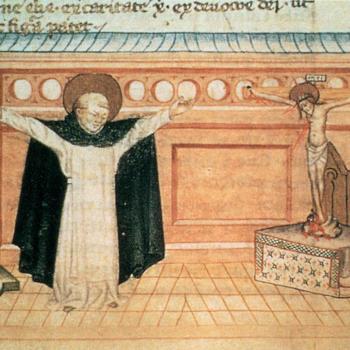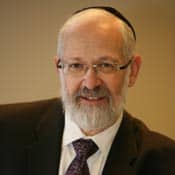Editors' Note:This article is part of the Public Square 2014 Summer Series: Conversations on Religious Trends. Read other perspectives from the Jewish community here.
Discontinuity, it turns out, is in the eyes of the beholder. The same Pew study that set off panic in parts of the Jewish community elicited disquieted satisfaction in the Orthodox Jewish community. What works is a lifestyle of religious commitment. Nothing else will do.
The results were a source of satisfaction because they offered the hard data to support what Orthodox Jews have recognized for quite some time. Orthodoxy was flourishing in the United States, and was protected from the double whammy of intermarriage and assimilation that was creating continuity nightmares for other groups of Jews, or at least those who cared.
Demographers had previously tried to deny the growth—both absolute and relative—of the Orthodox. But as I told the Los Angeles Times as early as 1998, "People lie. Statistics lie. Kosher pizza shops don't lie." The visual evidence for Orthodox vitality was there for anyone who looked, not only in kosher eateries, but in schools, synagogues, and upscale shtetl sprawl in many cities.
Pew (and a later follow-up analysis of the original data) showed that 27 percent of Jews younger than eighteen live in Orthodox homes, despite the fact that only 11 percent of American Jews are Orthodox. Orthodox Jews averaged 4.1 children per adult, while America's general public averages 2.2 children. Orthodox Jews have more children than non-Orthodox, Pew reported, and their retention rate, at least among the young, was higher than previously reported. While other American Jews were averaging 1.9 children per family (well below zero population growth, even without factoring in those who marry out, or choose not to marry), the Orthodox family averaged 4.1, with higher rates in the most religiously traditional parts of the community. "Orthodox Jews will eventually likely be the majority of American Jews," said Sarah Bunin Benor, a professor of Jewish studies at the Hebrew Union College and a member of Pew's advisory committee.
All this suggests that attempts to rebrand Judaism by focusing on history, politics, culture, or matzoh balls might all be stillborn. Despite the firm belief of the heterodox that Orthodoxy could not thrive in America while other forms would, the opposite occurred. Membership in the Jewish community might have its advantages, but it also demands commitment to sustain itself. Jack Wertheimer, Professor of American Jewish History at the (non-Orthodox) Jewish Theological Seminary, faulted other denominations for making it too easy for Jews to take part in Jewish life. When you have few or no expectations of Jewish living, you essentially strip it of meaning and devalue the entire enterprise of Judaism.
The Orthodox have to work harder for their spiritual bread, because they adhere to a legal system called halacha that makes demands upon them in every facet of life. Through this, however, they reap the benefits of engagement of the Divine each and every day, and of sharing a sense of community with fellow spiritual travelers.
Orthodox Jews will face many challenges in the next half-century, but they are not the same as those faced by non-Orthodox Jews. New intellectual challenges must be dealt with. Underemployment is rampant in the more traditional parts of the community, where suspicion of general culture leaves many without access to the educational tools required in a changing economy. More than any other factor, private day-school education that provides non-trivial appreciation of Judaism is central to Orthodox growth. But the out-of-sight costs of tuition are making Orthodox life difficult on parts of the community.
The Pew results, however, were disquieting as well as satisfying. Orthodox Jews do not relish being the last Jews standing, because as a matter of Jewish principle, they see every Jew as a precious asset, and mourn the loss of every Jewish soul who brings the 3,300-year-long odyssey of survival against all odds to a dead end with his or her assimilation. Part of the Orthodox agenda for the next decade is to find ways to engage non-Orthodox brothers and sisters, who are so different in their politics, their culture, and their definition of Judaism, and beg them to return home. It may be the toughest challenge of them all.
8/20/2014 4:00:00 AM





